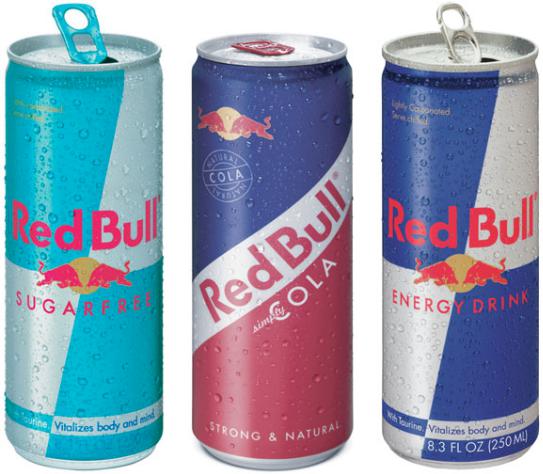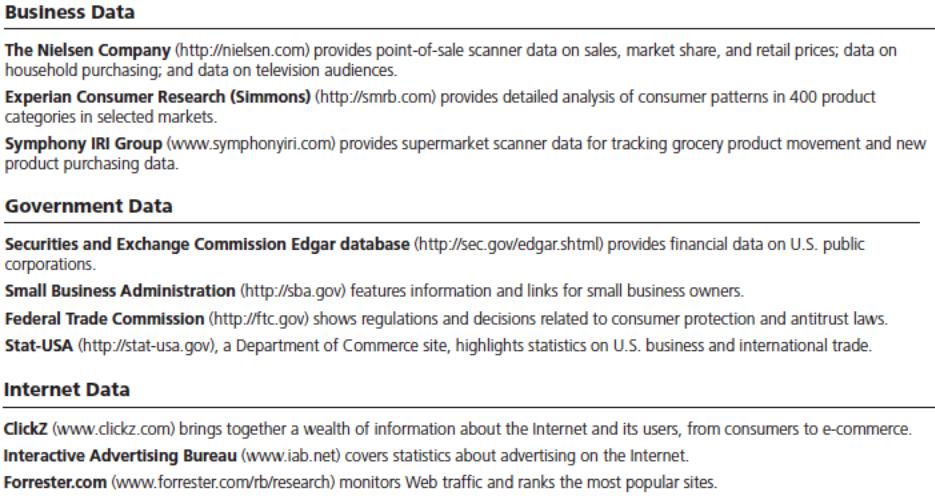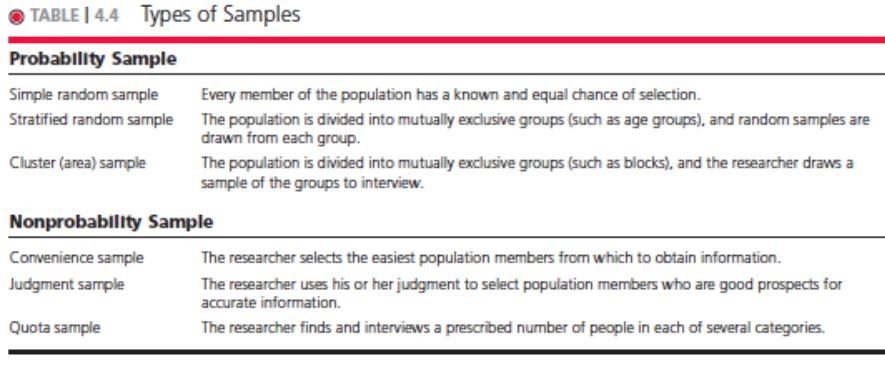
Marketing_L3(2013)
.pdf
Developing the Research Plan
A decision by Red Bull to add a line of enhanced waters to its already successful mix of energy and cola drinks would call for marke&ng research that provides lots of specific informa&on

• The demographic, economic, and lifestyle characteris&cs of current Red Bull customers.
• The characteris&cs and usage paaerns of the broader popula&on of enhanced-water users
• Retailer reac&ons to the proposed new product line
• Forecasts of sales of both the new and current Red Bull products.

Gathering Secondary Data
Informa&on that already exists somewhere, having been collected for another purpose.

Gathering Secondary Data
• Outside suppliers(MONITOR, Simmons, Nielsen)
• Commercial online databases(Dialog, Pro-Quest, LexisNexis)
• Industry associa&on, government agency, business publica&on, and news medium
Ø obtain more quickly Ø lower cost
Ø provide data an individual company cannot collect on its own—informa&on that either is not directly available or would be too expensive to collect.
Ø The needed informa&on may not exist
Ø Researchers can rarely obtain all the data they need from secondary sources.
Secondary Informa&on
Relevant
(fits research project needs)
Accurate
(reliably collected and reported)
Current
(up-to-date enough for current decisions)
Impar&al
(objec&vely collected and reported)

Primary Data Collec&on
Informa&on collected for the specific purpose at hand
• relevant
• accurate
• current
• unbiased

Research Approaches
Observa&onal research |
Survey research |
Gathering primary data by |
Gathering primary data by asking |
observing relevant people, |
people ques&ons about their |
ac&ons, and situa&ons. |
knowledge, agtudes, |
|
preferences, and buying |
|
behavior. |
Ethnographic research |
Experimental research |
A form of observa&onal |
Gathering primary data by selec&ng |
research that involves sending |
matched groups of subjects, giving them |
trained observers to watch and |
di erent treatments, controlling related |
interact with consumers in their |
factors, and checking for di erences in |
“natural environments.” |
group responses. |

Contact Methods
Focus group interviewing
Personal interviewing that involves invi&ng six to ten people to gather for a few hours with a trained interviewer to talk about a product, service, or organiza&on. The interviewer “focuses” the group discussion on important issues.
Online marke&ng research
Collec&ng primary data online through Internet surveys, online focus groups, Web-based experiments, or tracking consumers’ online behavior.

Sampling Plan

Research Instruments
Ques&onnaires
The ques&onnaire is by far the most common instrument, whether administered in person, by phone, by e-mail, or online.
• Closed-end ques&ons
• Mul&ple-choice ques&ons
• Scale ques&ons
• Open-end ques&ons
• Researchers should also use care in the wording and ordering of ques&ons. They should use simple, direct, and unbiased wording.
• Ques&ons should be arranged in a logical order.
• The first ques&on should create interest if possible, and di cult or personal ques&ons should be asked last so that respondents do not become defensive
